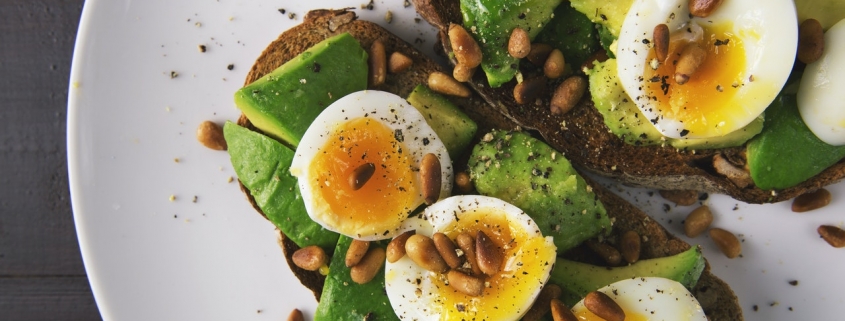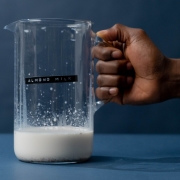7 Tips Guide To Healthy Eating
Do you have trouble figuring out healthy eating for you, especially if you have limited time, limited knowledge, and/or limited interest? Here are some general guidelines. They are very simple.
Nonetheless, if you are used to ‘grabbing’ take-out or eating fast food or a lot of processed / packaged food, it might feel like landing on another planet.
Best practice is to initiate one healthy eating change at a time. When you have that one fairly well worked into your routine, then you can add another one.
- Protein: It’s good to eat some at every meal. Beans, organic sprouted tofu, organic tempeh, poultry, and fish are good sources. Try to eat fish that is wild and from the Pacific Northwest US, like wild Alaskan salmon. Fish from other waters contain large amounts of mercury. Factory farmed fish is genetically modified and often the sanitation in the tanks is lacking. Beans are best cooked from dried beans. If using canned beans, avoid cans with lead and BHT. Hummus is also a good alternative. Nuts and seeds also contain protein, but they are also high in fat and calories, so they are listed in the Good Fats category below.
- Whole Grains: Some say limit to a serving a day. People who have trouble losing weight do better with less grains. Healthy eating of whole grains includes: brown rice, buckwheat, amaranth, quinoa, wild rice, oats. Avoid wheat, as it is very hybridized at this point and causes many people: weight gain, bloating, indigestion, sleepiness, allergies. The same may apply to other grains with gluten like rye and barley.
It is better to mostly have grains rather than bread. It is best to avoid gluten-free products that have a lot of refined starches like tapioca and potato starch.
- Good Fats: When eaten with a good balanced diet, good quality fats tend to burn body fat. This category includes: a small handful of nuts or seeds, cold-pressed olive oil (check to see that you source does not mix it with soy or canola oil), cold-pressed coconut oil, organic butter and ghee, avocado. Make your own salad dressings when possible.
- Veggies: Eat lots and lots of these for healthy eating. Eat mostly cooked ones and some raw. Leafy green veggies are loaded with nutrients as are veggies with rich yellow-orange and deep purple-red colors. You can’t go wrong eating large quantities of these, with the exception of a lot of potatoes (because of the high glycemic index). Cooked veggies are easier to digest and assimilate. If you have weaker digestion, avoid too many raw veggies. Have a small salad midday (they are harder to digest at night). You can also eat raw veggies in easier-to-digest forms like freshly squeezed juice, green smoothies, lightly-cooked sprouts. It’s best to make your own sprouts, as the ones in the store are often mushy at the bottom and can make you sick. Sea vegetables like dulse, kelp, and nori are another option. Use them in small amounts for added minerals. Many of them are high in sodium. Check that your source does testing for heavy metal contamination.
- Fruits: Eat in moderation, because of the high sugar content. This is especially important to watch if you have any blood sugar imbalance or high lipid levels. Berries are high in anti-oxidants and low in sugars and calories. They are great in smoothies. Other good ones are grapefruit, tart apples, peaches, plums, cantaloupe. Fruits that are high in sugar include mangoes, bananas, pineapple, watermelon, dried fruit. If having dried fruit, use in moderation and soak or simmer in water first. Breakfast is a good time to have fruit. Avoid having them for dessert, as they don’t combine well with proteins.
- Probiotics: You can take a probiotic to help with digestion and assimilation, or get them from fermented foods. Sauerkraut and other fermented veggies are a great source. Other sources include: yogurt, kefir, aged soy sauce, tempeh, sourdough bread.
- Other: Well, realistically you will also eat other things. Organic dairy is a good source of protein if you can tolerate it. Sweeteners that are low in sugars include coconut sugar, Xylitol, brown rice syrup, yacon syrup. Be mindful of keeping your intake low, i.e. one or two tablespoons a day. Soft drinks and fruit juices are loaded with sugar. It is best to avoid them. Dark chocolate is a good treat, but be mindful of how much you eat, as the calories and sugars add up. One or two squares a day should suffice. Avoid having every day. Another option is to make your own hot chocolate, so you can control how much sweetener you put in.
If the above make up 95% of your diet, you’re in good shape. Allow for the occasional junk food of your choice. If you are in relatively good health and follow the above diet, and exercise regularly, it probably won’t matter at all. But if it sets up a craving and throws you off track, it might be best to skip it, at least for now.
Questions? Please reply below to have them answered, or contact me. Please also leave your comments on what works for you, so others may also benefit.










Leave a Reply
Want to join the discussion?Feel free to contribute!